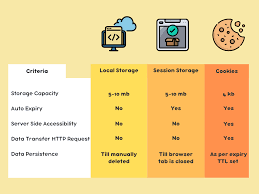At the dawn of the new millennium, marketers began to embrace tracking cookies as a convenient method for connecting with their desired audiences on a broader scale. However, as time progressed, these tools lost their appeal due to increasing concerns over user privacy.
To clarify, tracking cookies are small text files that websites place on a user’s browser to gather information about their online behaviour. They track various data points, including clicks, shopping habits, device details, geographical location, and search history.
From a legal standpoint, the use of tracking cookies hinges on obtaining user consent in compliance with data protection laws like the GDPR in Europe. Users have the ability to delete these cookies through their browser settings if they choose.

In this blog post, we will explore tracking cookies, delve into their functionality, and guide both end-users and website owners on how to manage or block them effectively.
Have you ever wondered what tracking cookies are? These small data files are placed on your web browser either by the site you’re visiting or by external parties. Their primary purpose is to monitor your online activities, gathering valuable information such as your clicks, shopping habits, device details, geographical location, and search history. This collected data plays a crucial role in creating targeted advertisements and analysing website performance.
If you’re curious about which tracking cookies are out there, you can explore CookieSearch—a comprehensive open-source database that lists around 100,000 different cookies used by various websites.
First-party tracking cookies specifically focus on understanding how visitors interact with a particular site. They help remember user actions across multiple visits and enhance the overall browsing experience for future sessions. For example, if you’ve noticed links to pages you’ve recently explored on the same website, that’s thanks to first-party cookies at work.
One notable type of first-party tracking cookie is those from Google Analytics—like utma, utmb, utmc, and utmz—which help website owners track their visitors and improve their services accordingly.

Have you ever wondered what third-party tracking cookies are? An external server generates these digital snippets through a piece of code that gets loaded onto the website you’re visiting. Typically, it’s advertisers, data aggregators, and various other sites that create these cookies. They appear on your screen through display advertisements, social media plugins, live chat popups, or web analytics tools utilised by the site in question. Once established, these third-party trackers can be accessed by their creators and are known as cross-site cookies because they gather information across multiple websites. This functionality makes them particularly valuable for online advertising and retargeting efforts.
To give you a clearer picture, think of examples like the cookies set by advertising networks such as doubleclick.net or amazon-adsystem.com. You might also encounter Facebook pixels or those from quantserve.com, smaato.net, addthis.com, taboola.com, and more. These tracking mechanisms play a significant role in how we experience online marketing today.
What kind of data do tracking cookies gather? Primarily, tracking cookies are utilised to promote various products and services to individuals, and as such, they predominantly record details about users’ online behaviour. These cookies can track the websites you visit, the specific pages you explore on those sites, any products you engage with, your past purchases, your IP address, and even your geographical location. Advertisers leverage this data to deliver tailored advertisements across the internet and within your social media platforms.

But are tracking cookies a threat? The answer varies. For instance, if you’re in the market for running shoes and stumble upon an advertisement that aligns perfectly with your search, that seems beneficial, doesn’t it? When employed for legitimate marketing endeavours, tracking cookies can enhance our online experience by providing personalised ads and recommendations that prove advantageous. You might have noticed ads appearing on different websites while you navigate through the internet. Consider an example of a display ad; if you click on the information icon associated with it, you’ll discover which ad networks are responsible for it and how to manage your privacy settings accordingly.
Over the years, the use of cookies to gather information has sparked significant concerns regarding privacy, prompting the establishment of specific regulations. Two prominent laws stand out: the General Data Protection Regulation (GDPR) in the European Union and the California Consumer Privacy Act (CCPA) in the United States.

When it comes to tracking cookies, GDPR mandates that website operators obtain explicit consent from users before collecting any personal information, including data gathered through online identifiers like cookies. It’s important to note that only strictly necessary cookies are exempt from GDPR’s consent requirements. According to Article 4(11) of this regulation, user consent must be a clear and affirmative action that is freely given, specific, informed, and unambiguous.
This means that websites are obligated to seek permission from users before placing cookies on their devices. Additionally, there is the ePrivacy Directive—often referred to as the EU cookie law—which predates GDPR and also stipulates that user consent is necessary for cookie usage. The exceptions here apply only to those cookies essential for facilitating network communications and those deemed necessary for website functionality.
The California Consumer Privacy Act (CCPA) broadens the definition of personal information to encompass unique identifiers, such as cookies, along with details about a consumer’s engagement with websites, applications, or advertisements. This includes insights drawn from browsing habits and search histories. Consequently, cookies utilised in behavioural advertising could be interpreted as a sale under the CCPA’s guidelines. To mitigate potential liabilities, it is advisable for websites employing third-party cookies for advertising purposes to incorporate a cookie opt-out notice that features a Do Not Sell button.

When it comes to managing tracking cookies, websites must present users with a clear cookie popup or banner that facilitates opting in or consenting to cookie usage. According to EU privacy regulations, consent must be explicit; any form of implicit agreement or soft opt-in is not deemed valid.
For many sites striving for compliance with these regulations, CookieYes offers an effective solution for securing user consent regarding cookies. Their platform assists countless websites in successfully navigating the complexities of cookie compliance. By utilising CookieYes’ services, you can ensure your website meets all necessary standards by following this checklist:
– Display a banner or opt-out notice related to cookie consent.
– Provide transparent information regarding how cookies are used and their intended purposes.
– Include options allowing users to either accept or reject cookies through clearly labelled buttons.
– Allow users the ability to give detailed consent across various categories of cookies.
– Offer insights into different cookie categories, detailing each one’s purpose, lifespan, and which domain sets them.
– Link back to an extensive cookie policy either on your website or within the banner itself.
– Ensure that users can easily withdraw their consent after initially granting it.
– Keep records of all user consents as proof of compliance.
– Automatically block third-party cookies and scripts until explicit user consent is obtained.
– Support the browser’s Do Not Track (DNT) status.
With these measures in place through CookieYes, you can confidently navigate the landscape of privacy compliance while respecting user preferences.

Consider opting for browsers that prioritise your privacy. While cookies are often the first thing that comes to mind when discussing online tracking, browser fingerprinting is another significant method that websites use to gather user information. This technique allows sites to collect details like your browser type and version, operating system, active extensions, time zone, language preferences, screen resolution, and a host of other settings. Although this information doesn’t pinpoint an individual directly, the likelihood of someone else sharing an identical browser fingerprint is relatively low. If you genuinely want to enhance your online security, think about transitioning to more privacy-conscious browsers such as DuckDuckGo, Brave, Maxthon, or Ghostery.
How to Manage Cookies in Maxthon Browser
1. Open Maxthon Browser: Launch the Maxthon browser on your device. Ensure you are using the latest version for optimal functionality.
2. Access Settings: Click on the three horizontal lines (menu icon) located at the top right corner of the window. From the dropdown menu, select Settings.
3. Navigate to Privacy Settings: In the Settings menu, look for a section labelled Privacy & Security. Click on it to access cookie management options.

4. Adjust Cookie Preferences: You will find various options regarding cookies, including turning them on or off. Choose your preferred setting based on whether you want all cookies, only first-party cookies, or no cookies at all.
5. View and Delete Cookies: For more control, go to the option that allows you to view stored cookies. This will display a list of websites that have stored cookies on your browser. You can select individual cookies to delete or clear all cookies by clicking “Delete All.”
6. Blocking Specific Cookies: If you wish to block specific websites from storing cookies, navigate to “Manage Exceptions.” Here, you can enter website URLs and define whether they should be allowed or blocked from saving cookies.

7. Clear Browsing Data Regularly: To maintain privacy and improve performance, consider clearing your browsing data regularly. Return to Privacy & Security and click on Clear Browsing Data. Check the box for Cookies and other site data before confirming.
8. Save Changes: After making any adjustments, don’t forget to save your changes if prompted. This ensures that your cookie management preferences take effect.
Following these steps will help you effectively manage cookies in the Maxthon browser while enhancing your online privacy experience.
